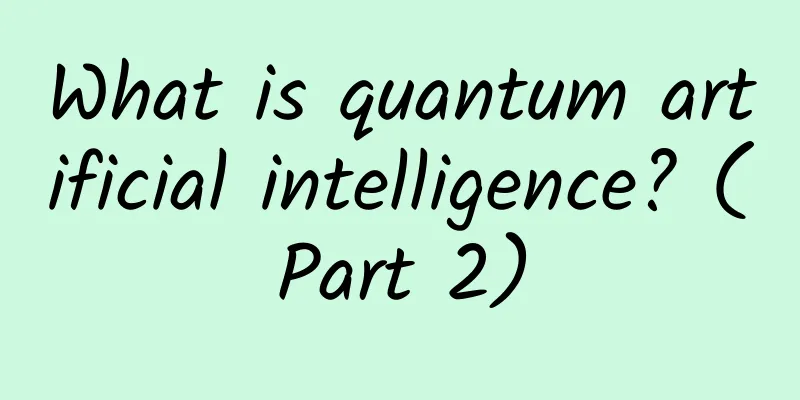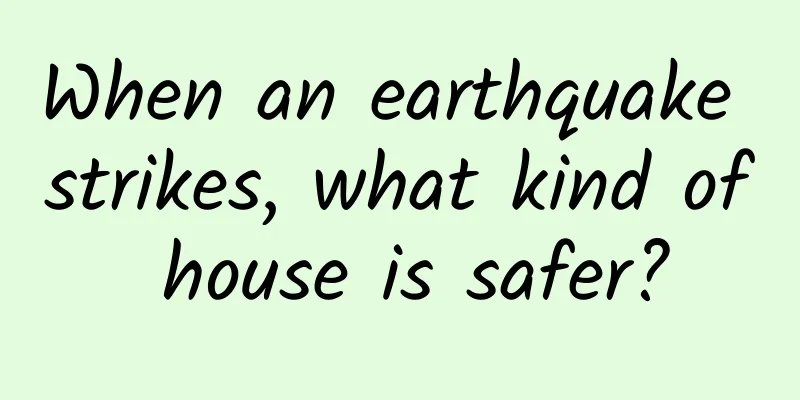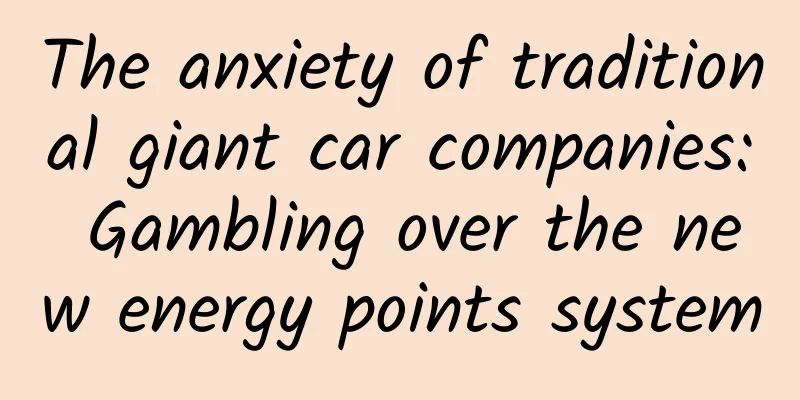What is quantum artificial intelligence? (Part 2)

|
Produced by: Science Popularization China Author: Luan Chunyang (Department of Physics, Tsinghua University) Producer: China Science Expo Last time we said that quantum artificial intelligence combines the latest research results of quantum computing and artificial intelligence technology, and has shown great application value in many fields. So, where has quantum artificial intelligence developed to now? Before finding the perfect answer, find the right answer first Just as the development of traditional artificial intelligence has been limited by the hardware performance of classical computers, the development of quantum artificial intelligence also needs to be guaranteed by the hardware performance of quantum computers. However, it is difficult for current quantum computers to reach the standard of truly universal quantum computing in a short period of time. In other words, it will take a long time to achieve the perfect combination of "quantum computing" and "artificial intelligence" and truly explore the full potential of quantum artificial intelligence. Schematic diagram of quantum artificial intelligence (Photo source: Veer Gallery) Therefore, how to use existing quantum computing hardware technology in the short term to solve practical problems encountered by artificial intelligence, so as to maximize the computing power of quantum devices, has always been a difficult problem that scientists have been pondering. Today's quantum computing devices already have dozens to hundreds of qubits, but this does not mean that they can replace existing classical computers to achieve universal quantum computing. This is because quantum computers are extremely susceptible to external interference during the operation process, which inevitably leads to operational errors. Therefore, a large number of additional qubits need to be introduced to realize the error correction function of the operation, and this quantum computing device containing noise is also called the "noisy intermediate-scale quantum (NISQ)" stage. Although quantum computers have not yet "evolved" to their ultimate and most powerful form, we can still solve practical problems based on NISQ devices. For example, "hybrid quantum-classical algorithms" can use classical computers to pre-process complex algorithmic problems and then pass them to quantum devices to unleash the potential of quantum computing. Quantum technology that mimics human brain computing (Photo source: Veer Gallery) Therefore, in order to effectively integrate quantum computing and artificial intelligence, we do not necessarily need a general-purpose quantum computer that has developed into its final form. The current NISQ device can be said to be the most suitable choice at the moment. So, in what aspects of our lives is quantum artificial intelligence technology currently being applied? Quantum Neural Networks - Quantum Artificial Intelligence that Mimics the Human Brain Human intelligence comes from the complex biochemical reactions of the brain, and neurons are the basic units that make up the complex neural network of the human brain. Generally speaking, the human brain is composed of about 100 billion neurons, and there are up to 100 trillion connection points between neurons to form a neural network. Signal transmission between neurons (Photo source: Veer Gallery) Each neuron can only be in two states: inhibition/excitation, which is similar to the 0/1 coding in computer operations. Each neuron is like a micro switch, which will activate itself when a large number of neurons near it are activated, thus completing the transmission and processing of neural signals. Inspired by the human brain neural network, scientists hope to use quantum artificial intelligence technology to construct a similar process. This way of imitating the human brain's thinking is called "quantum neural network." Simply put, quantum neural network uses the parallel computing advantages of quantum algorithms to optimize and accelerate the recognition pattern of artificial intelligence. Neural network diagram (Photo source: veer photo gallery) In life, we are now accustomed to using "scanning" to identify things around us, such as identifying the same product, label and plant, etc., which all rely on the learning and optimization training of neural networks. For traditional artificial intelligence, the connections between neurons require a large amount of data for training, and a large amount of computing resources are required for continuous optimization. Generally speaking, large neural network models usually have billions of interconnected neurons, and the connections between neurons need to be continuously adjusted according to the recognition results to improve the accuracy of recognition. With the help of quantum artificial intelligence, we can represent the originally huge neural network model with mathematical matrices, and then use the parallel computing power of quantum computing to accelerate the matrix solution process. In this way, the originally extremely complex quantum neural network will become simple and efficient under the processing of quantum artificial intelligence. Quantum Generative Adversarial Network (QGAN) - Attack and Defense of Quantum Artificial Intelligence I believe everyone has experienced being harassed by spam text messages or emails in life. In order to block annoying spam text messages or emails, we can use filters to distinguish between normal letters and spam letters. In order to evade the detection of filters, the sender of spam letters will use more complex means to fight. For example, modify the characteristic words in the spam letter, or rearrange the letter content. This confrontation between the spam sender and the filtered receiver is the traditional generative adversarial network (GAN) process. However, this AI-based adversarial process is not perfect because it is highly dependent on the selection of adversarial samples. If there is a slight deviation in the original sample data, the system will eventually make a wrong decision. The battle between spam senders and filter receivers (Photo source: Veer Gallery) Just like the shielding function of our smartphones, although most of the time it helps us filter out junk emails and annoying harassment calls, it can also easily filter out some normal message notifications by mistake, thus affecting our daily lives. Generally speaking, the generative adversarial network consists of two important parts, namely the generator and the discriminator . Under the guidance of the discriminator, the generator accepts irregular noise signals as input to fit similar data close to the real data; while the discriminator is responsible for identifying the received data to distinguish whether it is real data or similar data, and finally feeds it back to the generator. In this way, the generator and the discriminator can continuously improve each other's performance in rounds of attack and defense training, until a large amount of computing resources and high electricity costs are spent to complete the continuous optimization of the generative adversarial network. Schematic diagram of traditional generative adversarial network (GAN) (Image source: Reference [1]) In order to speed up the training of generative adversarial networks, scientists proposed to use quantum algorithms to implement quantum generative adversarial networks (QGAN). Compared with traditional generative adversarial networks, the data processed in quantum generative adversarial networks are quantum states with superposition. Schematic diagram of quantum generative adversarial network (QGAN) Image source: Reference [2] In this way, the generated data trained by the quantum generative adversarial network will produce a realistic effect. In other words, the generator at this time has the ability to create real data, and the discriminator can no longer distinguish between real data and generated data, thus completing the strongest attack and defense showdown. The future is promising In fact, the development of quantum artificial intelligence technology is much faster than we imagined. Traditional artificial intelligence technology is mostly used for big data search tasks, while quantum computers using quantum algorithms can complete search tasks more efficiently than classical computers. Therefore, people expect to use quantum artificial intelligence technology to optimize large and complex search problems. In addition, there are still many specific algorithmic problems to be solved in quantum artificial intelligence technology, such as quantum game theory and quantum cryptography. They are like technological keys to open the door to the future world, attracting countless scientists to devote themselves to exploring the infinite potential of quantum artificial intelligence. Although quantum artificial intelligence is still in the exploration and development stage, it has shown great application potential. As scientists continue to break through technical bottlenecks, quantum artificial intelligence is expected to have a revolutionary impact in quantum chemistry, materials science, drug design, financial risk analysis and other fields. It can be said that the emergence of quantum artificial intelligence has brought us a combination of wonder and wisdom. By combining the strange properties of quantum computing with the wisdom of artificial intelligence, we can expect more powerful and efficient artificial intelligence systems, which will completely change our understanding of computing and problem solving. References: [1] Wang Jue, Lu Bin & Zhu Yuefei. (2022). A review of the generation and application of adversarial network traffic. Computer Science (S2), 651-661. [2] Hu, L., Wu, SH, Cai, W., Ma, Y., Mu, X., & Xu, Y., et al. (2019). Quantum generative adversarial learning in a superconducting quantum circuit. Science Advances, 5(1). |
<<: The best fruit for vitamin C supplement in autumn. It would be a shame if you didn’t eat it yet!
>>: OpenAI officially released: ChatGPT "Classroom Teaching" Usage Guide
Recommend
Why do "3 agents" have no water to drink? Scientists have discovered 14 reasons for failure
2025 is the year of agent explosion. Based on the...
For the first time in history! Audi voluntarily admits monopoly: willing to be punished
The Economic Information Daily reporter learned o...
I was aware that I was dreaming and I could even control it...
Dreaming is a confusing, hazy experience that is ...
Simplify the framework for switching between PageView and TabView
Source code introduction: Developers who have dev...
Wedding Industry-Short Video Distribution Guide!
The wedding industry has always been an industry ...
Quanzhou SEO Training: What aspects should a good website SEO optimization include?
A good website SEO optimization should include th...
The size of the mobile QQ installation package has increased to 879MB! Netizens: Unreal Engine 4 is built in
When smartphones were first introduced, the mobil...
Select pictures by imitating WeChat Moments
Source code introduction: This version implements...
The new generation of MacBook Pro has many problems. Do you still dare to buy it?
Since the release of the new generation of MacBoo...
Don't be a leader who is overwhelmed, a private lesson on management with an annual salary of one million
[Private management lesson for those with an annu...
The ups and downs of Chinese advertising companies over the past 40 years
*Commercial advertising was once accused of being...
Analysis of the competition between Kuaiying and Jianying
“Competitive product analysis is one of the essen...
Case review | Cold start of a new project, clever use of the community to reach 100,000 users in 10 days
The pyramid was not built in a day, and the secre...
New energy vehicles counterattack: Weilai's market value soared 18 times, and Tesla became the world's largest automaker
In 2020, the epidemic had a huge impact on the gl...
Both are important cell resources. What are the similarities and differences between stem cells and immune cells?
There exists a human health guardian corps in our...









